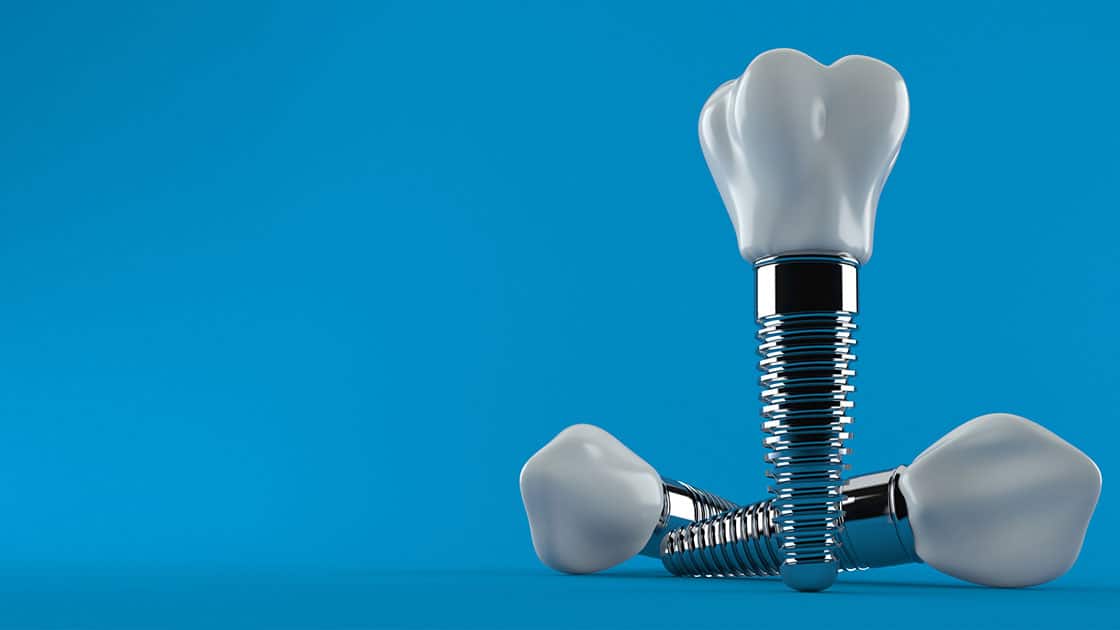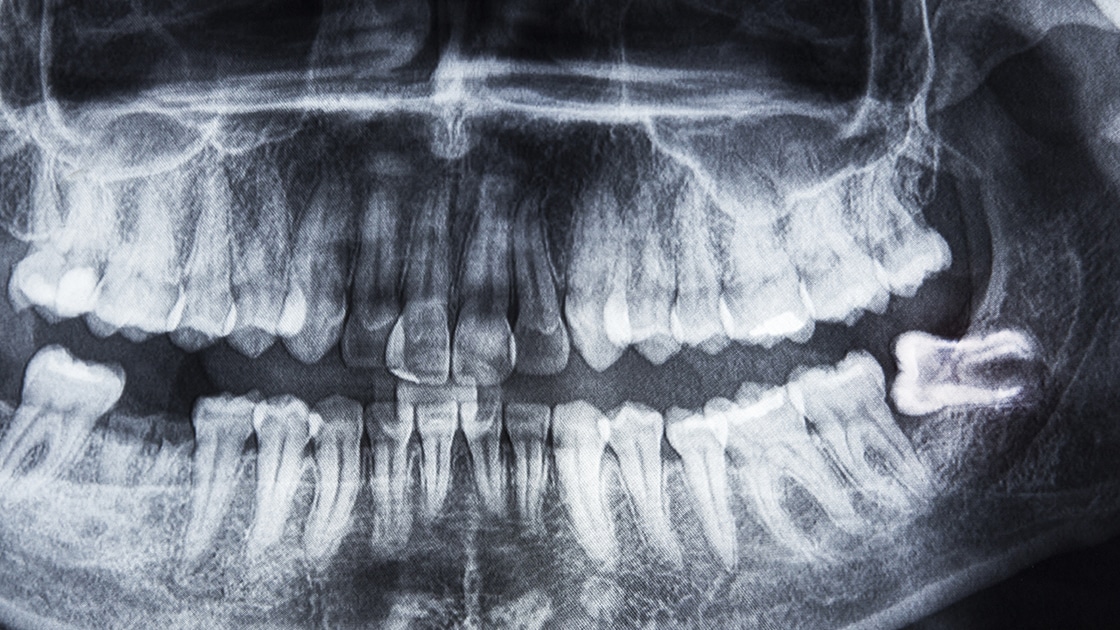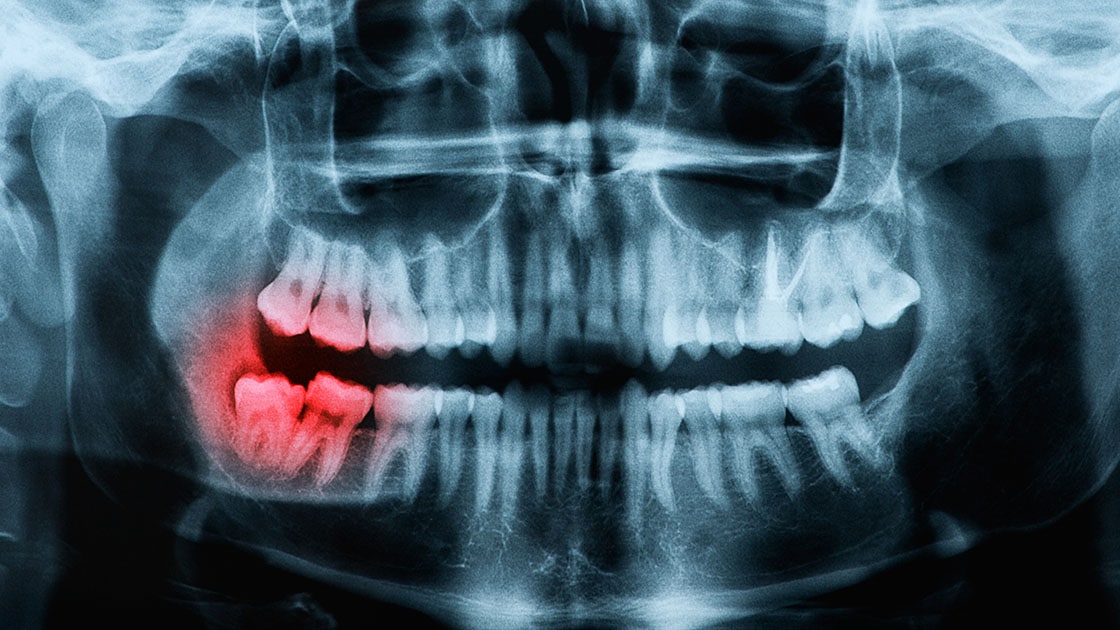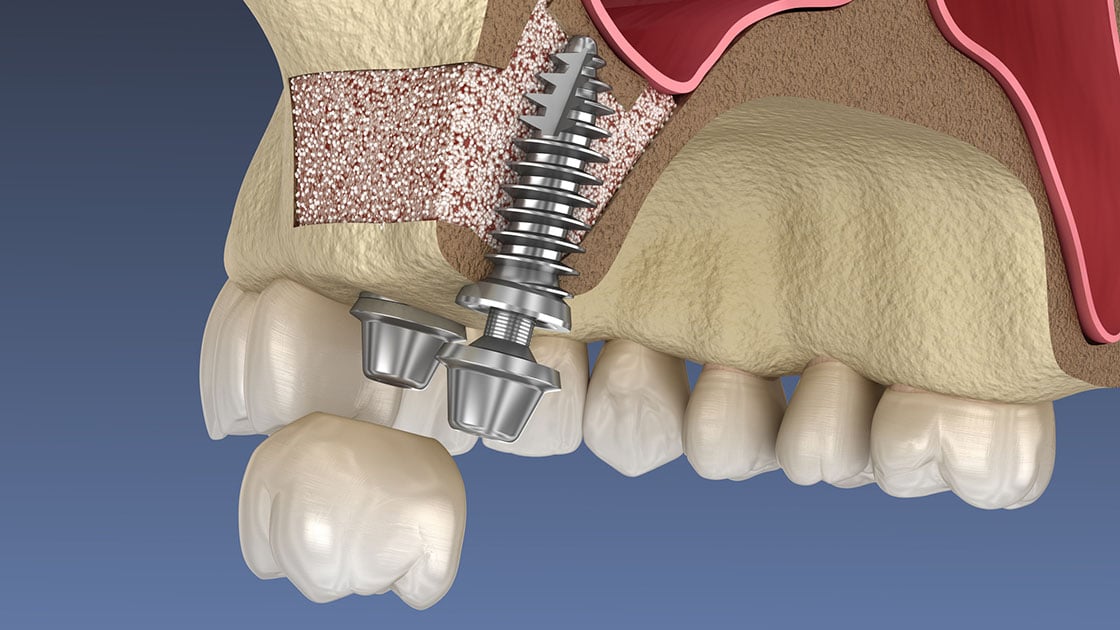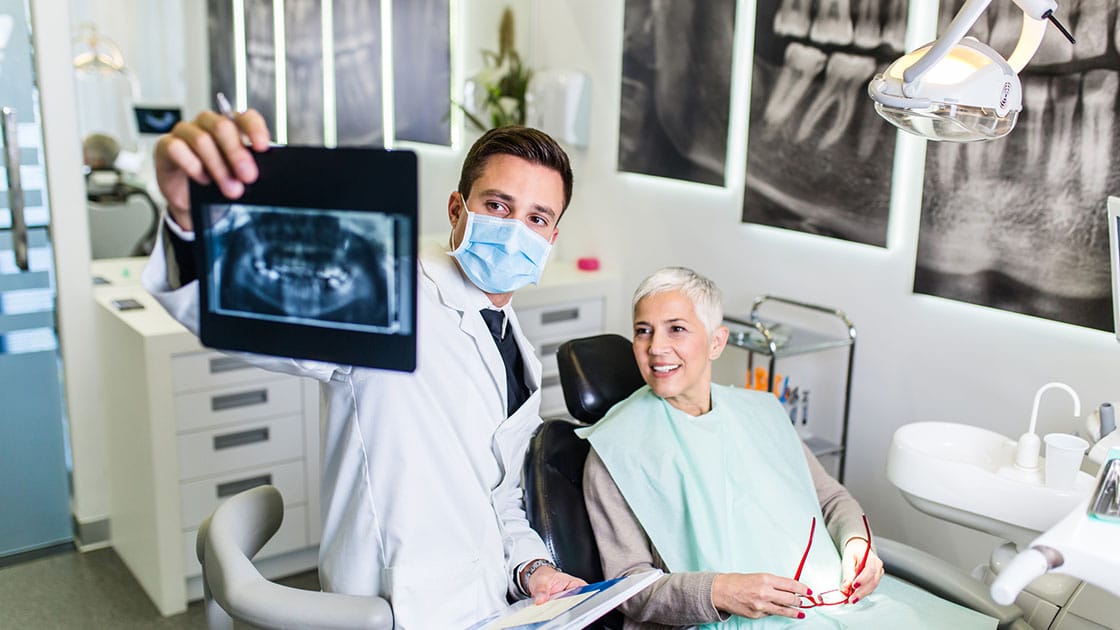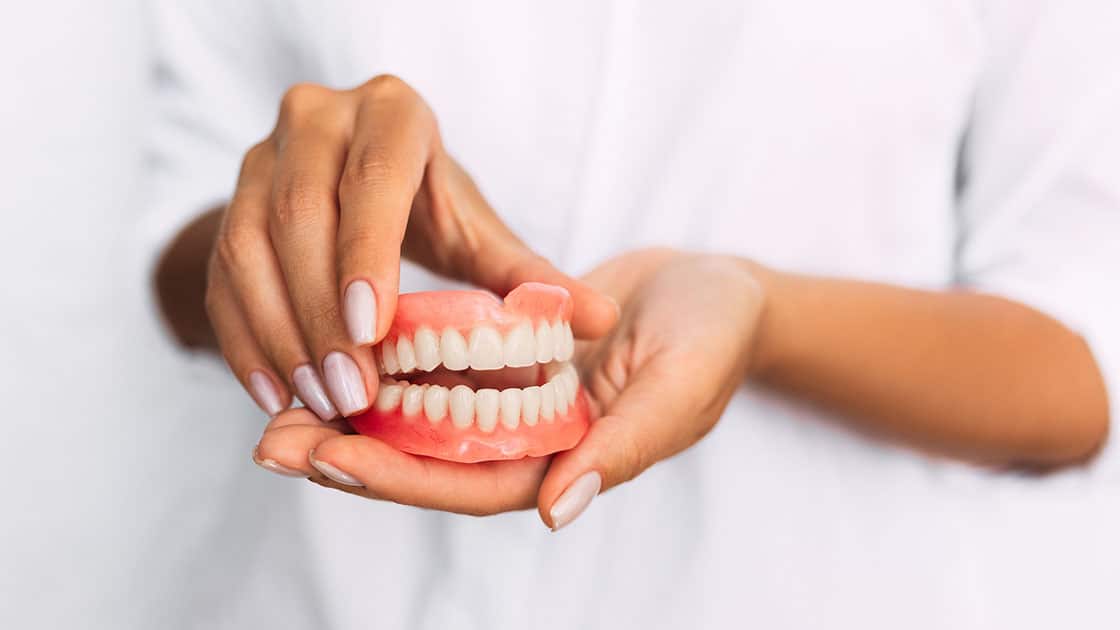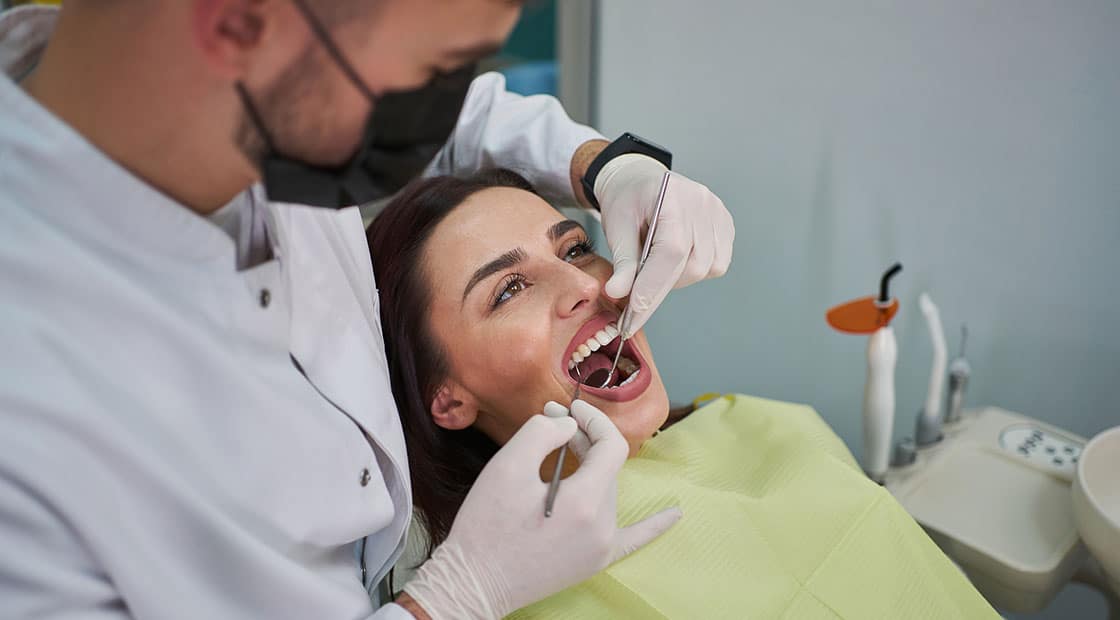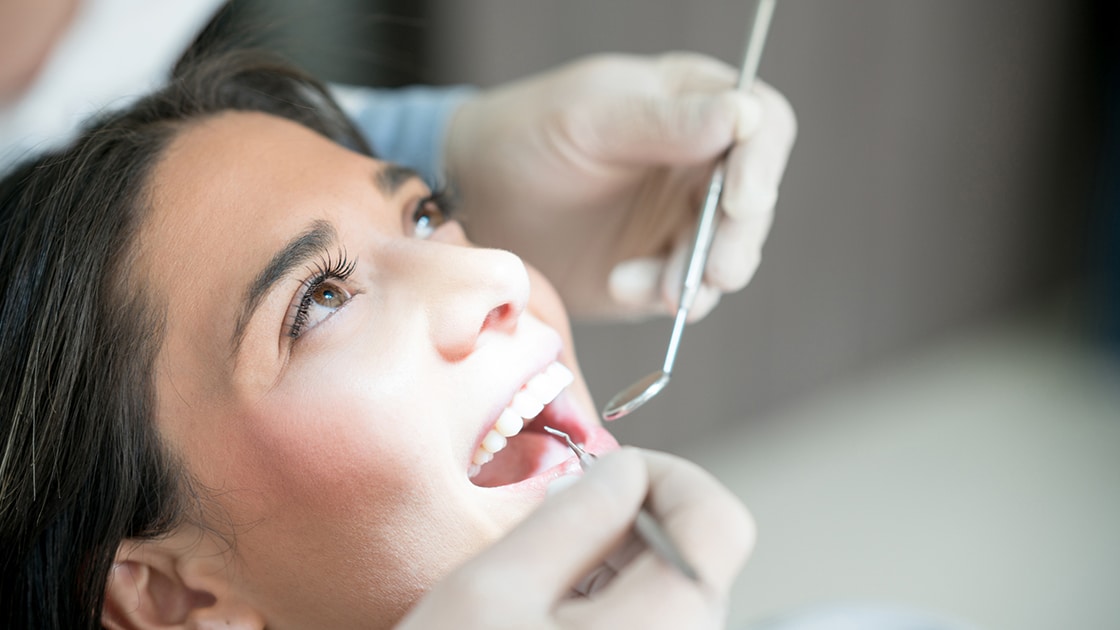
Dental Implants
Dental implants are used to replace tooth roots. Implants provide a strong foundation for fixed or removable replacement teeth. Dental implants are small anchors made of biocompatible metal, called titanium, placed in the jawbone. The anchors begin to fuse with the bone over a few months. After the fusing process, known as osseointegration, abutment posts are inserted into the anchors to allow for the attachment of the replacement teeth. To fabricate the replacement teeth, an impression is taken and a model of the bite is created. The replacement teeth are based on this model. Replacement teeth can either be crowns, bridges, or dentures.
Wisdom Tooth Removal (3rd Molars)
A wisdom tooth that is deemed problematic is normally extracted to avoid any oral complications. To have a wisdom tooth removed, a small incision is made to open up the gum tissue over the tooth and remove any bone that is covering the tooth. Once the tooth is in view, it is grasped with a dental instrument, known as a forcep, and gently rocked back and forth to loosen it from the jaw bone and surrounding ligaments. Sometimes the tooth may need to be cut into smaller pieces to make it easier for removal. Stitches may be necessary after the removal of a wisdom tooth.
Bone Grafting
Bone grafting is the replacement or enhancement of bone around teeth. When a tooth is lost, the surrounding bone collapses. Bone grafting is performed to reverse bone loss or enhance existing bone. The grafting material can be taken from parts of the body or from synthetic material. Bone grafting allows for proper support of dental implants or prostheses.
Impacted Tooth & Tooth Exposure
An impacted tooth is a tooth that fails to fully pass through the gums.
Impacted wisdom and cuspid (or canine) teeth are fairly common. To correct impacted teeth, there are a few treatment options. For impacted wisdom teeth, the most common procedure is extraction. For impacted canine teeth, several treatment modalities are available. Orthodontics (braces) can be used to open space for proper eruption. Primary (baby) teeth can either be extracted or surgically exposed to allow for the placement of an orthodontic bracket to help align the teeth.
Frenectomies
A frenectomy is a simple surgical procedure performed to release the connection of the “frenum,” a connective muscle between two tissues. There are two types of oral frenectomies that are frequently performed on both adults and children for a variety of reasons.
A labial frenectomy is performed on the tissue that connects the lip to the gums to aid with orthodontic treatment or proper fitting for a denture or appliance.
A lingual frenectomy procedure is performed on the connective tissue under the tongue to help correct speech issues caused by limited movement due to the frenum.
Sinus Lift
A sinus lift is a surgery that adds bone to your upper jaw in the premolar and molar areas of your mouth. To add bone, an incision is made where the premolar and molar teeth were previously located. Once the bone is exposed, a small circular shape is made in the bone to access the sinus. Once the sinus is accessed, the sinus membrane is gently pushed up and away from the upper jaw. Once this is done, bone graft material is placed into the sinus space to change the shape and provide support. Once the bone is in place, the incision is closed and the healing process begins.
Dentoalveolar Surgery
The term dentoalveolar refers to the teeth and the alveolar bone that supports the teeth. Surgery involving the dentoalveolar area is the basis for much of oral and maxillofacial surgery. Dentoalveolar procedures simple procedures, such as simple extractions to much more complex procedures. Often, a combination of procedures requiring extraction, modification to the bone, and/or modification of the gum tissue surrounding the surgical site are included in a dentoalveolar surgery.
Dentoalveolar procedures may include a combination of the following:
- Partial or full tooth extraction
- Removal of bone material
- Reshaping of bone material
- Soft tissue removal
- Soft tissue repair
Gingival (Gum) Grafting
If gum recession is present and tooth roots are exposed, a gum graft may be recommended. This procedure is used to control and prevent further gum recession and subsequent damage to the surrounding teeth and bone structure. Often, a soft tissue graft also improves the appearance of a patient’s smile and sensitivity to heat and cold.
During a soft-tissue graft, tissue is surgically placed to cover as much of the exposed root area as possible. Often, a tissue flap is created to allow the added tissue to be joined to the existing gums to facilitate tissue growth and healing. This procedure may be used to treat one or several adjacent teeth at the time of the surgery.
Pre-Prosthetic Surgery
There are certain clinical circumstances in which oral surgery procedures will be necessary to help prepare for or facilitate the prosthetic phase of patient treatment. These procedures may include either hard or soft tissue surgery, or even a combination of the two.
Because a denture rests on the jaw bone, it is important to match the shape and size to a new prosthesis. For a comfortable fit, bone may need to be smoothed, reshaped or removed before other dental procedures. Your surgeon will consult with you to determine your specific needs.
Extractions
A tooth that can not be saved with restorative materials may need to be removed. First, the area will be numbed with anesthesia. The tooth is then loosened with a special dental instrument known as an elevator. After the tooth is loosened from the socket, it is removed. Stitches may be necessary after the removal of a tooth.
Platelet Rich Growth Factor
Platelet Rich Growth Factors and Platelet Rich Fibrin are a form of mixed gel that can be applied directly into tooth sockets and other sites. Placing this material in tooth sockets after tooth extractions can improve soft tissue healing and positively influence bone regeneration.
These techniques offer a new approach to tissue regeneration. PRP derives from the centrifugation of a patient’s own blood and contains growth factors that influence wound healing. This is important in tissue repairing mechanisms. The use of PRP in surgical practice could have beneficial outcomes, reducing bleeding and enhancing soft tissue healing and bone regeneration.
Sedation Options
Danville Oral Surgery Center offers sedation options for your appointment. Sedation can help ease anxiety so you can remain comfortable before and during your procedure.
Emergencies
During office hours, immediate attention will be given to your situation, and you will be seen as soon as possible. After office hours, please give the office a call and follow the instructions provided. Your call will be returned as soon as possible. If you are experiencing a serious or life threatening emergency, please call 911 or visit the nearest emergency room.

